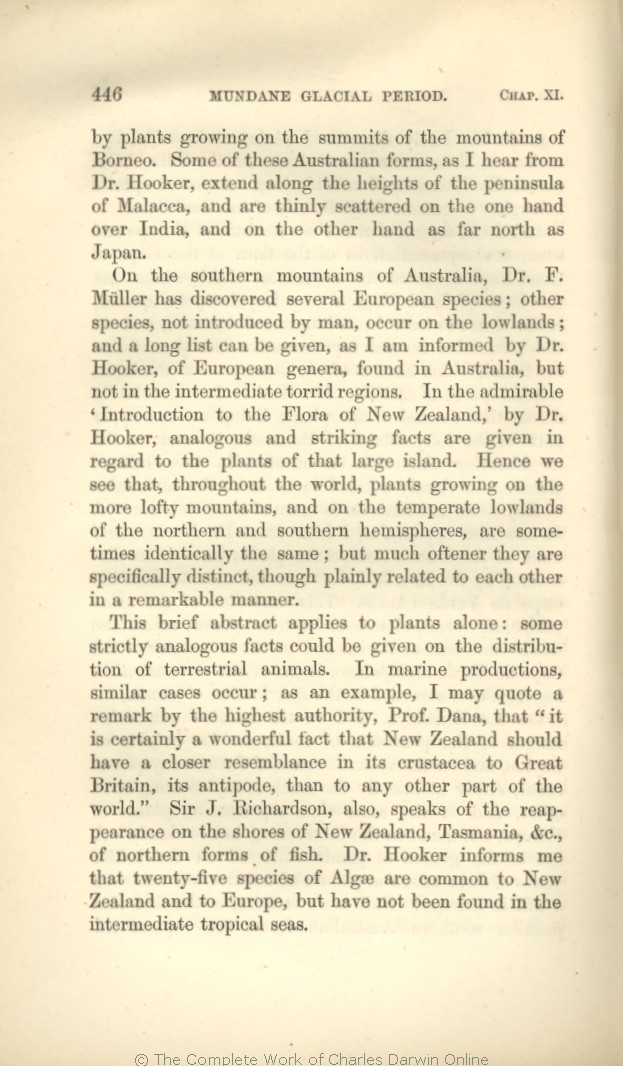growing on the summits of the mountains of Borneo. Some of these Australian forms, as I hear from Dr. Hooker, extend along the heights of the peninsula of Malacca, and are thinly
scattered | scattered 1866 1869 1872 | | scattered, 1859 1860 1861 |
| India, 1866 1869 1872 | | India 1859 1860 1861 |
| hand as 1866 1869 1872 | | as 1859 1860 1861 |
|
On the southern mountains of Australia, Dr. F.
Müller | Müller 1866 1869 | | Müller 1859 1860 1861 1872 |
| general, 1866 | | genera, 1859 1860 1861 1869 1872 |
| that, 1866 | | that 1859 1860 1861 1869 1872 |
| throughout the world, 1866 |
| throughout the world, the 1859 1860 1861 |
| certain 1869 1872 |
| mountains, 1859 1860 1861 1866 | | mountains 1869 1872 |
| and on the temperate lowlands 1859 1860 1861 1866 |
| OMIT 1869 1872 |
| northern and southern hemispheres, are sometimes identically 1859 1860 1861 1866 |
| tropics in all parts of the world, and on the temperate plains of the north and south, are either 1869 1872 |
| same; 1859 1860 1861 1866 | | same 1869 1872 |
| but much oftener they are specifically distinct, though plainly related to each other in a remarkable manner. 1866 |
| but they are much oftener specifically distinct, though related to each other in a most remarkable manner. 1859 1860 1861 |
| identical species or varieties of the same species. 1869 |
| species or varieties of the same species. 1872 |
| 2 blocks not present in 1859 1860 1861 1866; present in 1869 1872 | | It should, however, be observed that these plants are not strictly Arctic
forms; for, as Mr. H. C. Watson has remarked, "in receding from polar towards equatorial latitudes, the Alpine or mountain floras really become less and less Arctic."
Besides these identical and closely allied forms, many species inhabiting the same widely sundered areas, belong to genera not now found in the intermediate tropical lowlands.
|
|
This | This 1859 1860 1861 1866 | | These 1869 1872 |
| abstract applies 1859 1860 1861 1866 | | remarks apply 1869 1872 |
| alone: 1859 1860 1861 1866 | | alone; 1869 1872 |
| some strictly 1859 1860 1861 1866 |
| but some few 1869 1872 |
| on the distribution of 1859 1860 1861 1866 |
| in regard to 1869 1872 |
| occur; 1859 1860 1861 1866 | | likewise occur; 1869 1872 |
| remark 1859 1860 1861 1866 | | statement 1869 1872 |
| "it 1859 1860 1866 1869 1872 | | "it 1861 |
| world." 1859 1860 1866 1869 1872 | | world." 1861 |
| &c., 1859 1860 1866 1869 1872 | | &c, 1861 |
|









